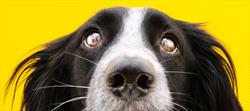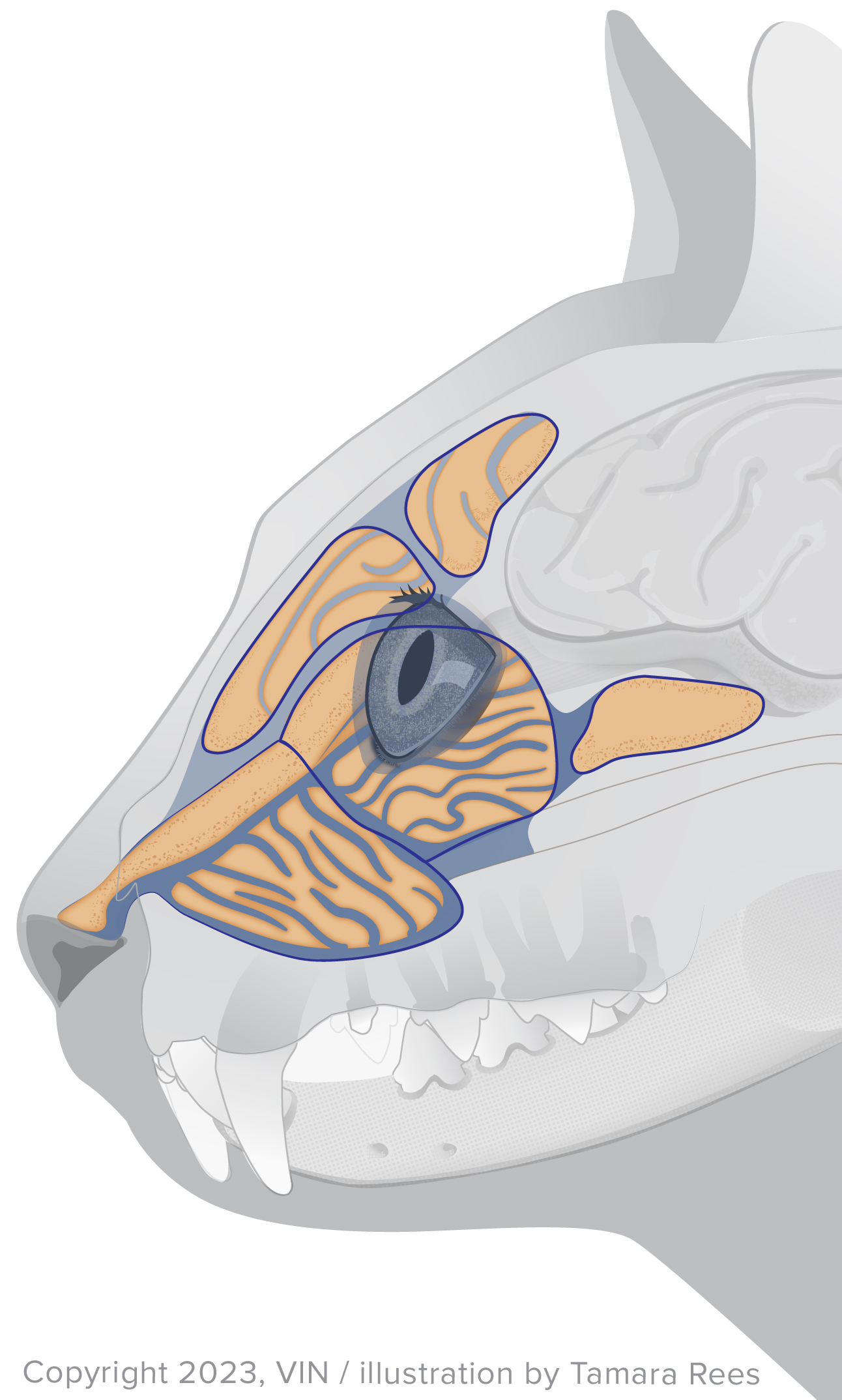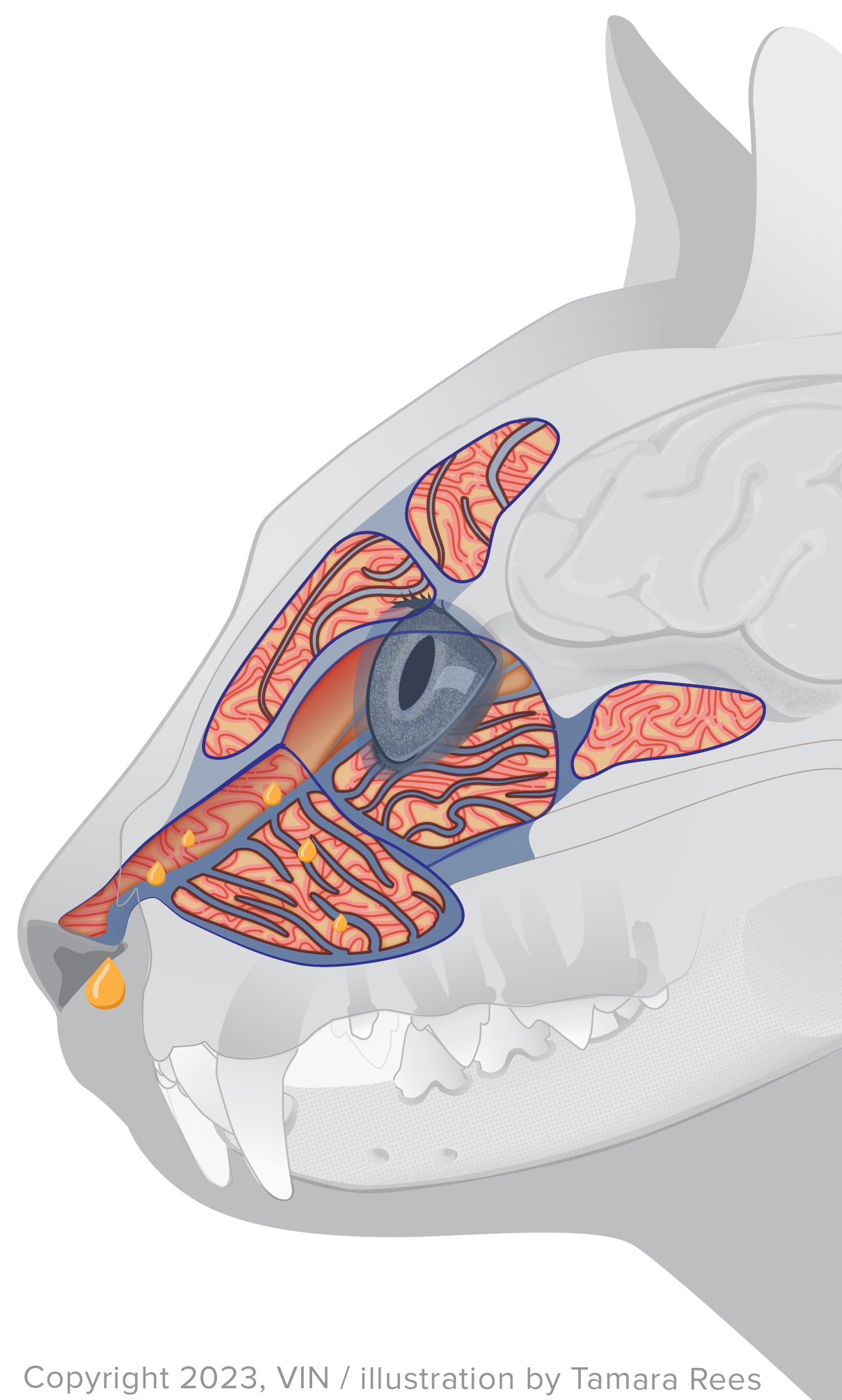Rhinitis is inflammation of the mucous membranes in the nose. If the lining of the sinuses is inflamed, that is called sinusitis. If both the nose and sinuses are affected, it is rhino-sinusitis. Rhinitis can occur by itself or as part of an upper respiratory illness/infection. Rhinitis can be mild, with just a bit of clear nasal discharge seen, or it can be severe enough to have green/yellow/hemorrhagic (bloody) discharge.
Potential Causes of Rhinitis
Many things can cause inflammation of the nose lining in dogs and cats. Some of them are:
- Tooth root abscess
- Viruses (feline herpesvirus, feline calici, and canine distemper, for example)
- Fungal infections
- Parasites (nasal mites, for example)
- Inflammatory polyp
- Birth defects (a cleft palate, for example)
- Facial/head trauma
- Foreign bodies (blades of grass, seeds, and grass awns, for example)
- Allergies
- Idiopathic lymphoplasmacytic rhinitis (chronic inflammatory rhinitis)
- Cancer
- Bacteria
Rhinitisarticle_nose.jpeg - Caption. [Optional]

Primary bacterial causes of rhinitis in cats are uncommon. The bacterial infection is usually secondary to another disease.
Aspergillus fumigatus is the most common cause of fungal rhinitis in dogs.
Cases of rhinitis can be chronic (ongoing) or acute (short-term). Chronic rhinitis has intermittent, recurrent episodes of sneezing and nasal discharge; sometimes there will be a partial response to antibiotics, but not enough to get rid of it forever. Chronic rhinitis/rhino-sinusitis cases in cats are often referred to as chronic snufflers.
Idiopathic lymphoplasmacytic rhinitis (chronic inflammatory rhinitis) is uncommon in the cat but may represent a hypersensitivity reaction to one or more environmental air allergens. In dogs, it was diagnosed in 20% of rhinitis cases, in one study. The German shepherd dog, Labrador retriever, dachshund, cocker spaniel, and Yorkshire terrier are the most commonly affected dog breeds. Median age of affected dogs is 8-9 years.
Normal (Inner) Nose and Sinuses in a Cat

Rhinitis in a Cat

Clinical Signs
Signs may include sneezing, pawing at the face (which can indicate a foreign body), snoring, nasal obstruction, and/or a nasal discharge. When the nasal passages are narrowed because of inflammation, the pet will breathe with an open mouth and experience shortness of breath. Sneezing is seen most frequently in acute rhinitis as the pet attempts to clear discharge out of the upper airways. Sneezing tends to be intermittent with chronic rhinitis. Conjunctivitis (inflammation of the conjunctiva, or pink eye) and tearing may be seen in conjunction with inflammation of the upper respiratory passage.
Diagnosis is based on history and physical examination. To determine the underlying reason for the rhinitis, the diagnostic workup often requires anesthesia for a complete examination. The workup usually includes radiographs of the skull, a culture of the nasal passage and its discharge, nasal wash, a microscopic examination of the discharge, and endoscopy (a type of imaging in which a lighted tube is inserted into the nasal passages).
Treatment
Treatment depends on the underlying cause of the rhinitis. Medications such as antibiotics, antihistamines, steroids, or anti-fungal medications may be called for. Secondary bacterial nasal infections are common, and nasal discharge often will resolve with antibiotic treatment. For cases involving foreign objects or cancer, surgery may be needed.
Prognosis
The prognosis is dependent on the underlying cause of the rhinitis and how chronic the case is.